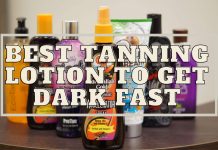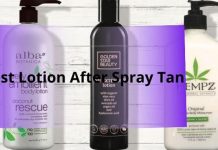UV rays penetrate through a variety of materials. Even fully covered in clothing, you may be putting your skin at risk of sunburn while walking on the beach wearing a cotton shirt.
Is it possible to tan through clothing? Clearly, yes. Although the fabrics have different properties and are made of different materials, you should never rely on them to protect your skin from UVA and UVB rays (the sun rays that cause sunburn). UVA rays can penetrate almost every type of clothing material, even those that UVB rays cannot. Clothing typically offers protection of about SFP 4-7, but this is not enough for extended periods in the sun. There are ways to protect yourself better from the sun when wearing clothes outside.
The majority of clothes protect against UVB, not UVA
Imagine sending your children outside to play with their friends on a hot summer afternoon, and they are wearing cotton t-shirts and pants. Although you may think that you are protecting them from harmful sun rays, the truth is that if you do not take extra precautions, they are still exposed to UVA rays.
Wearing a t-shirt and going outside in the sun, for instance, will not necessarily result in sunburn even if you spend long periods outside. Since you only notice tan lines on your arms, you assume that the shirt is protecting your skin, even when it isn’t.
How to protect your skin from UV rays with your clothing
1) Matte Fabrics Absorb Less
Wear matte fabrics instead of shiny synthetics. Rather than absorbing the sun’s rays, shiny fabrics reflect them, which does nothing to reduce exposure.
2) Choose Synthetic Fabrics
Synthetic materials provide better protection than natural fabrics, which might surprise you. Mostly, this is due to the layers of the fabric – because synthetic fabrics tend to have tighter weaving or knitting, which means that less UV radiation is penetrating the skin.
Wear clothing such as polyester, lycra, nylon, and acrylic instead of silk or cotton. Check the Denier rating of the fabric to confirm its thickness and tightness if you are unsure.
3) Layer Up
If you can, wear a few layers of clothing to reduce your skin’s exposure to the sun. Lighter materials can be layered to protect your skin, while still feeling cool.
4) Keep Dry
Wetting your clothing can reduce its UPF protection. Reduce your exposure by staying dry.
5) Wear Wider Hats
You might not know this: just because a hat looks cool, does not mean it will protect your skin. The facial and neck skin is particularly sensitive and prone to damage from prolonged sun exposure.
You can protect these areas, as well as your back and neck, with wider hats. Baseball caps will only protect the forehead.
6) Wear Darker Colors
The thought of wearing darker clothes in summer may make you feel hot on its own, but darker fabrics actually provide more protection than lighter pastels and whites. Darker colors absorb UV rays, reducing UV exposure. Sun-protective clothing is usually dyed darker.
Is it even possible to tan through clothing?

Now that it has been established that you can get sunburns through clothes, it is important to understand how and why this happens. Different fabrics provide different levels of protection, so some will provide a greater level of protection than others.
Fabric protection levels are determined by the following factors:
- As mentioned earlier, the Denier rating is the easiest way to determine a fabric’s suitability for sun protection. As a general rule, heavier fabrics like canvas, denim, and wool provide more protection than lighter fabrics like silk and cotton. Check the safety levels of the fabric by holding it up against light; if you can see through it, the protection level is low.
- Fabric content matters more than you might think. When you wear a dress made from unbleached cotton, the lignin will absorb UV rays, giving you greater protection than a bleached cotton dress. Lightweight satiny silks and high-tech materials treated with dyes or chemicals will also shield the skin from some UV rays in the same way, as well as some lightweight black materials like denim.
- Clothing fit – loose clothes are better than tight ones. The reason for this is the stretch of that tight fabric, spreading out the weaves and reducing the protection levels of the fabric as more UV radiation passes through.
- Wear clothing that covers more skin than less, because it will provide you with better protection. When possible, wear long skirts or pants, as well as long-sleeved shirts instead of sleeveless tops or short-sleeved shirts.
- UPF rating – often, the manufacturers of clothes will indicate UPF labels, which indicate how well the clothes will protect you from the sun.
The amount of UV radiation that is allowed to pass through your clothes determines the degree of damage to your skin. Because of this, it is not recommended to go outside without extra sun protection, such as good sunscreen, since clothing will only protect you to a certain extent. Wearing clothes does not make you immune to sun damage or tan through clothing.
Read More:
- Tanning Bed Time Chart: How To Get Perfect Tan
- Does Self Tanner Expire? Can I Use?
- How To Get A Darker Tan Faster & Darker Outside Without Burning
Here are some extra things to know about tan through clothing and sun protection:
1) Always stock up on protection mechanisms
You need to invest in clothes that provide high levels of sun protection if you spend a lot of time in the sun, whether due to unavoidable circumstances or simply because you want to spend time outdoors. The UPF of these clothes should be as high as possible, even up to UPF 50, to reduce the sun’s rays from penetrating your skin.
You have plenty of options when it comes to sun-protective clothes, as certain brands cater their products to people who need extra protection from the sun. These clothes are characterized by their tight weave, as well as by UV-reduction ingredients that make them more effective.
2) UPF vs. SPF
People often confuse these two, but they are very different. UPF, or Ultraviolet Protection Factor, is a method for rating the UV protection offered by different materials and fabrics. The SPF, or Sun Protection Factor, is a rating system for sunscreens that shows the level of protection they offer. Always look at UPF rather than SPF when determining the clothing protection factor. Read More Does Sunscreen Prevent Tanning.
3) Sun-Protective Clothing
There is sun-protective clothing available for those who spend a lot of time in the sun. Outdoor clothing brands have been developed specifically to cater to those who require higher levels of protection. The fabrics are densely woven and have UV-inhibiting ingredients, making them more effective in reducing exposure.
Color and fiber structure also influence how protective these specialized clothes are, which is why most protective clothing comes in darker colors like black or indigo. UV rays are most effectively absorbed by these colors.
When purchasing sun-protective clothing, it is important to remember that the more skin you cover, the less exposure your skin will receive. You can protect a larger area of your body with long-sleeved or full suits.
In warmer weather, sun-protective clothing is typically well-ventilated, and the antibacterial properties help when the material gets wet or sweats excessively. In contact with sunscreen, the material is still effective, and you should always wear sunscreen even when you are wearing sun-protective clothing.
Tan Through Clothing FAQs
1) Which of my clothes has the most sun protection?
You can find out the UPF rating of your clothing by reading the label or tag. There is a quick fix way to estimate how much light gets through if you can’t find out this way. You can see how much light shines through your clothing by holding it up to the sun. The more light that passes through the material, the less UV protection it offers.
2) What can I do to make my clothes more UV resistant?
You can make your clothing more UV-resistant. You can get off-the-shelf laundry detergents that increase the UV protection of clothing. These detergents are available as either an additive optical brightener or an additive UV absorber. Both of these increase the UV protection of your clothing.
3) Under a beach umbrella, can I tan?
Most people believe that beach umbrellas provide enough protection from the sun’s rays, but this is not true. Despite beach umbrellas being typically made of a thick weave material that blocks UV rays, it doesn’t consider scattered or diffused UV rays, which are abundant in environments such as a beach.
4) Tan-Through clothing exists?
Costumes have been designed to be tan-through. Women and men can sit in the sun and tan their skin without tan lines showing on their costumes. It is a growing trend, but it is not the best option for the skin. UV rays can permanently damage your skin if you are exposed to them at high levels. To achieve your desired look, opt for a spray tan or self-tanner.




